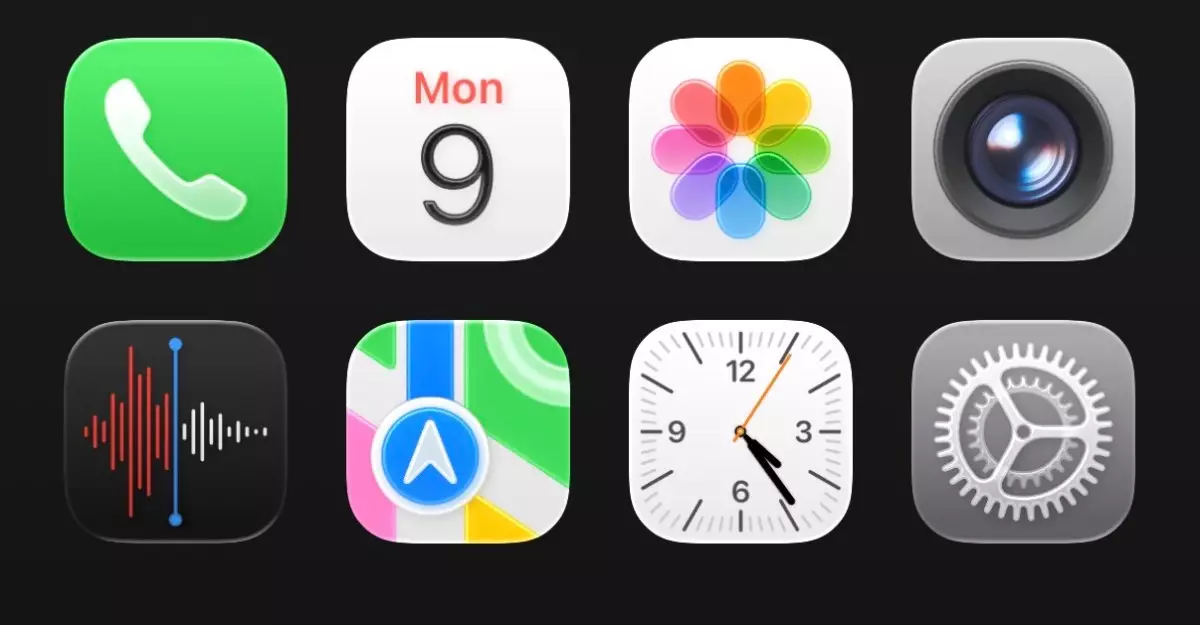When it comes to innovations in mobile devices, Apple consistently pave the way with striking aesthetics and functional improvements. At the recent WWDC 2025, the tech giant revealed its latest design language, dubbed Liquid Glass. This new visual overhaul, set to roll out across all Apple devices, is more than just a visual gimmick; it signifies a bold direction for user interface design in the Apple ecosystem. As the Device Editor at The Verge, Jay Peters reflects on this transformative update after immersing himself in the experience of iOS 26’s developer beta.
Visual Wonders and Its Jarring First Impressions
Liquid Glass introduces a fluidity to app icons, tab bars, and even interface elements like text magnifiers that can be captivating yet disorienting. Apple’s execution brings a touch of translucency, creating the illusion that icons are delicately hovering above the backdrop. It’s as if the user is gazing into a glassy surface that reflects the vibrant imagery behind it, offering a new sense of depth. For many, this aesthetic might initially feel overwhelming, particularly for those accustomed to Apple’s traditional, more solid design language. Peters himself expressed skepticism upon first exposure but noted the aesthetic flourishes typical of Apple’s design philosophy. In this instance, however, the balance between modernity and usability feels precarious and may disrupt habitual interactions.
The Control Center: Elegance Meets Clutter
One major area where Liquid Glass falters is in the Control Center layout. While the new design features a modern and sleek interface, the transparency seems to amplify a sense of chaos, rather than clarity. As Peters describes, the Control Center appears cluttered, particularly against a minimalist grayscale background. This raises a critical point regarding user accessibility: clarity should always trump aesthetic appeal. Users may end up spending more time deciphering their options instead of efficiently navigating through them. If Apple is to uphold its reputation for seamless design, refining the opacity of these essential control elements is non-negotiable.
Familiar Yet Novel: Iconography and Interaction
Despite the overwhelming initial impressions, there are glimpses of brilliance in the minor yet impactful changes across applications. In the Clock app, for instance, the revamped tab navigation offers unique animations reminiscent of water droplets that adds a delightful touch to navigation. Even though Icons retain familiarity, their newfound ‘bubbly’ appearance evokes a sense of playfulness. This design shift can enhance user engagement if executed well, but it also introduces areas of inconsistency that could confuse long-time users. The juxtaposition of well-loved tools and their new interpretations will undoubtedly require some adjustment, and Apple must consider the endured pathways users have forged during their time with previous versions.
Refining the User Experience: Beyond Aesthetics
That said, Peters raises valid concerns regarding excessive spacing in systems like the Settings app and messaging functionalities. Similarly, the bending effect introduced in Safari comes off as more of a playful whim than a practical feature. In an ecosystem renowned for coherence, any update must incorporate a perspective that appreciates the minutiae of smaller details. While aesthetics can capture attention, functionality is crucial to maintaining user loyalty and experience. As it stands, Apple cultivates the risk of prioritizing style over substance.
Looking Ahead: Cultivating User Anticipation
Peters concludes with a hint of optimism, suggesting that with time, this radical design could indeed grow on users. The fluidity of Liquid Glass is undoubtedly captivating, but Apple must strike a fine balance between modernity and user familiarity. In an industry where innovation is imperative, Apple’s Liquid Glass may represent just the tip of the iceberg, with substantial changes likely to occur ahead of the official launch. This invites an intriguing question: will Apple adapt to incorporate user feedback and emerge on the other side with a refined, harmonious design that resonates with its audience? Only time will tell, but there is no doubt that Apple is on a bold path of reinvention.

